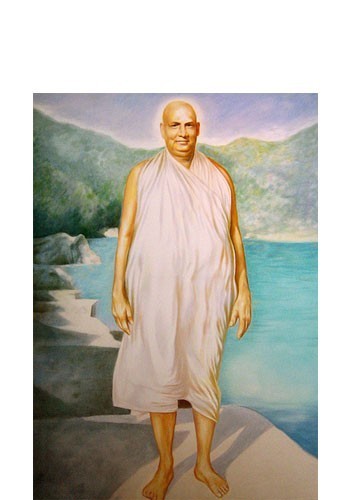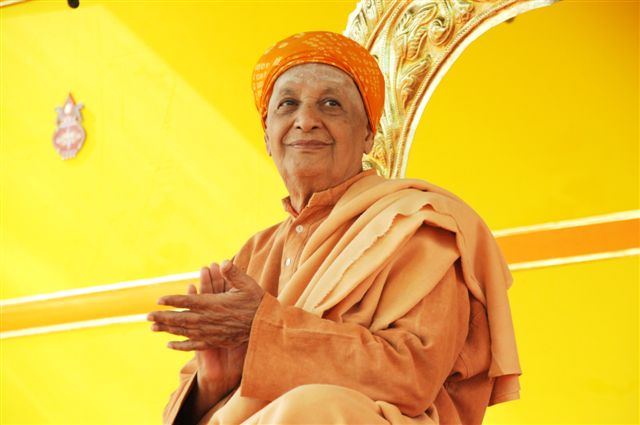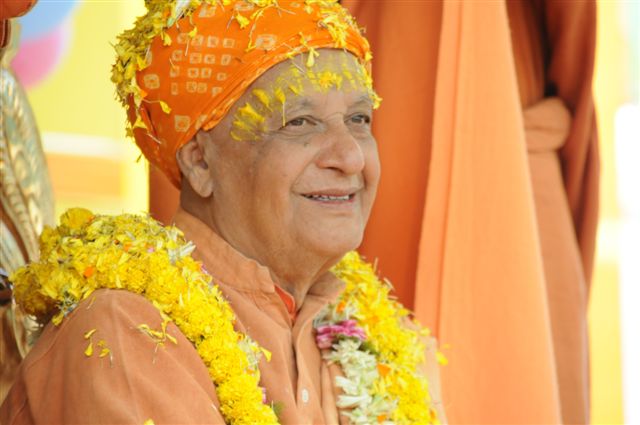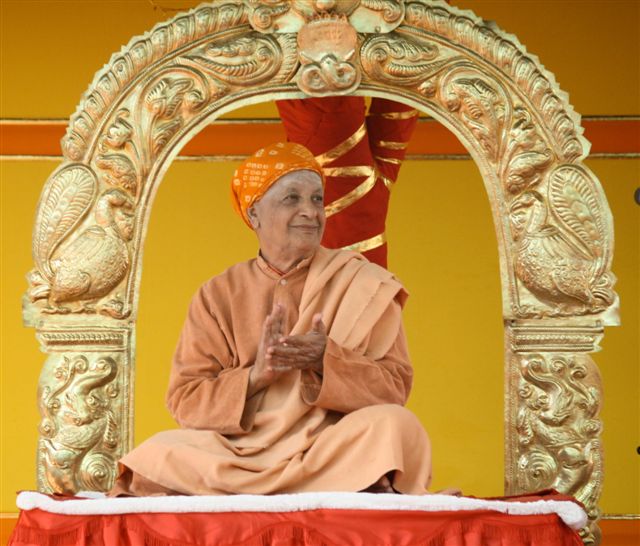Satsang by Swami Sivananda Saraswati
Worship is the effort on the part of the worshipper to reach the proximity or presence of God or the Supreme Self. It consists of all the observances and practices – physical and mental – by which the aspirant makes steady progress in the realm of spirituality, and eventually realizes the presence of God in his own heart.
Patanjali also emphasizes the importance of worship in various places in his Raja Yoga Sutras. For even a raja yogi, worship is necessary. He has his own ishta or guiding deity. Self-surrender to God, ishwara pranidhana, is one of the raja yoga niyamas.
Worship may take the form of prayer, praise, meditation, bhajan and kirtan. It differs according to the growth and evolution of the individual. There is nature worship. Parsis worship the element fire. Hindus worship the Ganges, cows, the peepal tree, etc. There is hero worship in which the individual imbibes the virtues of the person whom he worships. Birthday celebrations of great persons are forms of worship. There is relic worship. There is worship of forefathers. There is worship of gurus, rishis and devatas.
Meditation is mental worship of the Lord; singing the Lord’s names or kirtan is vocal worship; service of living beings with love and a divine attitude is physical worship. As a person evolves, he passes from one stage of worship to another. The lower stages drop away by themselves. A person of a higher stage should not condemn one who is in a lower stage. One should not forget the underlying, indwelling, interpenetrating, one essence or intelligence when doing worship of any kind.
The fundamental object in worship is union with the Lord who pervades or permeates all these names and forms, by developing intense love. All are worshipping the one basic reality, Ishwara. The differences are only differences in names and forms due to differences in the worshippers. Worship of Lord Jesus or Lord Mohammed or Sri Guru Nanak or Lord Buddha or Lord Mahavira is really worship of Ishwara only. These are all forms. “In whatever way men approach Me, even so do I welcome them, for the paths men take from every side are mine, O Partha.” (Bhagavad Gita, )
Wave the lights, sing a song
There are rituals for beginners in the path of worship. When the devotee advances, when his mind is totally absorbed in his object of worship, there is no use in waving lights, offering sandal paste, ringing bells, etc. The whole cosmos is Vrindavan for him. What a glorious state of devotion it is! The devotee attains para bhakti, or supreme devotion. All rituals drop away by themselves for such an exalted bhakta. But rituals are of great help for beginners in developing bhakti. They should not be ignored on any score.
Bhajan is worshipping God. All methods that are calculated to bring the devotee face to face with God are bhajan. Japa, repetition of His name, sankirtan (singing His name either alone or in a group), prayer, etc. constitute bhajan. Even trees, brooks, rivers, the ocean, the gentle breeze, the sun, moon and stars, birds, etc. are doing bhajan silently.
Which worshipper are you?
The Vedas have prescribed five classes of worship according to the predominating element in a person. They are worship of Ganesha, Shiva, Hari, Shakti and Surya. If the earth element is predominant, one should worship Ganesha. If the water element is predominant, one should worship Hari. If the fire element is predominant, one should worship Surya. If the air element is predominant, one should worship Shakti. If the space element is predominant, one should worship Shiva.
There is another classification according to the capacity of the individual. Some worship elementals and lower spirits. They are ignorant people. Some worship forefathers and rishis and celestials. Some worship avataras such as Krishna and Rama. Some worship the saguna Brahman (God with attributes). Advanced aspirants worship the formless, attributeless, unmanifest satchidananda Brahman.
There are also four kinds of worship corresponding to four different states and dispositions of the seeker. The realization that the supreme spirit, Paramatma, and the individual spirit, jivatma, are one, that everything is Brahman and nothing but Brahman, the everlasting being, is the highest state, Brahma bhava. Constant meditation – with yoga processes – upon the Lord in the heart is the lower form, dhyana bhava. Lower still is the bhava of which japa, mantra recitation, and hymns of praise are the expression, and lowest of all is external worship or pooja.
Pooja bhava is that which arises from dualistic notions of the worshipper and the worshipped, a dualism that necessarily exists in greater or lesser degree until monistic experience is attained. One who realizes the truth of advaita or non-dualism knows that all is Brahman. For him there is neither the worshipper nor the worshipped, neither yoga nor pooja, neither meditation, japa, vows or rituals. He is a siddha, a perfect sage in its fullest sense.
The deluded worshipper
A neophyte in the path of devotion says, “I practise para bhakti. There is no need for me to go to places of worship. What is there in worshipping idols, in offering flowers and waving lights?” But he is labouring under a serious delusion. This is the state of those who proceed on the spiritual path without the advice or aid of a spiritual preceptor. They do whatever they like. They follow the prompting of the lower mind and do not make any spiritual progress.
It is very difficult to develop bhakti. The internal enemies – lust, greed, anger, hatred, egoism and jealousy – are very powerful. They stand in the way of cultivating devotion. One who has reached the stage of para bhakti will be absolutely fearless, desireless, angerless, I-less, mineless. He will be extremely humble and have no attachment to anything. He will be above body consciousness. If someone does not possess all these marks, but simply says, “I am a para bhakta,” put no value on his words. People shed false tears which are not the sincere teardrops of divine love.
The aspirant should pass through the various initial stages of bhakti yoga just as an academic student goes through matriculation and BA before sitting in the MA class. He should make garlands of flowers for the Lord and sweep the floors of the place of worship. He should light lamps and ring bells. All these should be done with faith, devotion and intense feeling. If the aspirant falsely and foolishly imagines that he has attained the highest state of para bhakti and neglects to practise bhakti sadhana, his little devotion will also evaporate quickly. He will soon fall into the deep abyss of worldliness.
Open the doors wide
Be humble and simple. Think that you are only a very small student in the bhakti yoga class. Strengthen your aspiration. Open the doors of your heart. Let the lightning spark of love arise in your heart. Let the heart sing to heart. Let the tears flow and divine ecstasy fill your whole being. Only then can you grow in bhakti and only then will divine grace descend.




